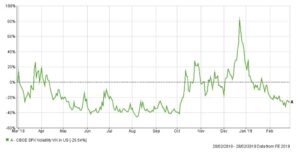Investors that use ESG metrics to influence the shape of their portfolios may be introducing additional risk without realising.
A body of work by Schroders suggests that investors may be embracing environmental, social and governance-based investment strategies without realising that their exclusion of non-sustainable assets greatly increases their concentration risk.
In its latest report entitled Multi-asset investments: Managing sustainability from a total portfolio perspective, the asset manager found that investors who screen out stocks based on sustainability criteria alone introduce the greatest level of additional risk.
“A screened approach is a pretty blunt tool, but it also impacts the active risk,” Schroders’ head of multi-asset strategies, Lesley-Ann Morgan explained in an interview. “Over the shorter-term, you may find that risk, relative to a non-sustainable portfolio goes up.”
In addition, the paper found that investors operating an “integrated” sustainability approach also increased risk levels, compared to portfolios which did not follow a sustainable strategy. The additional risk in portfolios where sustainability was integrated, however, was found to be lesser than those portfolios following an approach where assets are screened out.
In an interview with ESG Clarity, Morgan acknowledged that the level of risk in sustainable portfolios will vary depending on the approach being operated by the investor.
Lessons from history
In the wake of the global financial crisis, fund selectors, investors, consultants and asset managers have looked closely at the concept of risk budgeting.
In the same way as an individual might set a personal spending budget, a risk budget is the maximum amount of risk that an investor will tolerate in the short-term, on the way to achieving their long-term investment goals.
In the crisis, investment portfolios took a battering and portfolio theorists looked to remodel how risk was measured within portfolios. In the years that followed, risk budgeting became widely adopted as a popular alternative to the previous ways of setting risk parameters.
“The main advantages of RB [Risk Budgeting] portfolios are the stability of the allocation, and the diversification management principle, which appear more robust than the diversification mechanism of mean-variance optimized portfolios,” Amundi’s head of quantitative research, Thierry Roncalli wrote in his paper entitled Constrained Risk Budgeting Portfolios, in February.
An extra budget
While investors have become more comfortable with the concept of a risk budget, few have recognised the value of using a sustainability budget too. In other words, how much additional risk are you willing to tolerate in order to accommodate your sustainability goals?
By ruling out sectors because of ESG-related concerns, investors can be increasing the concentration risk within a portfolio, explains Schroders’ Morgan.
“For those components that can’t be managed sustainably, you might remove them, or choose to leave them in the portfolio as a non-sustainable component,” she said.
“It can be quite difficult to build a sustainably-allocated commodity strategy or a sustainable currency component. So, if you want your portfolio to be 100% in terms of your sustainability budget, you may need to take some of those elements out.
“The impact is that the portfolio becomes more heavily concentrated across asset classes. You may only be left with a small number of drivers in the portfolio that you can truly say are sustainable. That is the dichotomy, and the trade-off between the risk and sustainability budgets.”
Risk recognition
Investors in global equities have witnessed a return of volatility in the past six months, with volatility spiking on 24 December 2018, as measured by the CBOE Volatility Index – aka ‘the VIX’ (see below).

For some proponents of ESG investing, this has given them a gentle nudge to think about ways to manage the concentration risk that exists within portfolios.
Russell Waite, director of Affinity Private Wealth, said his firm is doing exactly this after his sustainable portfolio was rocked in December by the worse month for the S&P 500 since 1931.
“In that environment, cyclical assets really struggled,” he said. “A lot of the sustainable equity world allocates to industrials and the industrial sector is very cyclical.
“We observed our portfolio and saw that our strategy had captured most of that downside. Fortunately, this year, cyclicals have rallied hard and are now performing strongly, but it made us take a step back and think.”
Acceptable assets
Waite said that the short-term volatility witnessed within the portfolio triggered a rethink to asset allocation by the team and subsequently led to the company agreeing to revise the behaviour of assets in the portfolio every quarter.
“Companies which are ticking the box as sustainable are quite limited. Therefore, there is a real risk you are overly concentrated in a small number of companies in a small number of sectors.”
Waite and his team have taken the step of considering asset classes which may not traditionally fit everyone’s view of an ESG-compatible sector, such as sovereign debt, but they are gaining their exposure by choosing the investment funds that are palatable to the strategy.
“We would like some sovereign debt in the portfolio, either developed or emerging market issued – because we want something that will be uncorrelated to equities, but we would want to be comfortable with the rules around any sovereign debt ETF to select the underlying issuers.
“What criteria are used to filter the underlying sovereign issuers within the ETF? Is it centred on human rights? The rule of law? Legal property rights? Governance? We are looking at sovereign debt as a diversifier, and an uncorrelated asset class.
“Ultimately, you have to find some kind of balance between your sustainability budget and your risk budget.”








